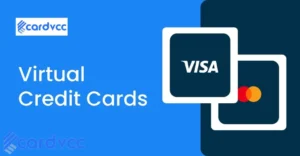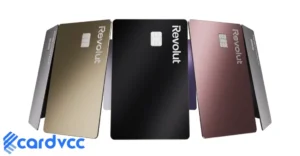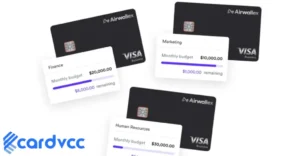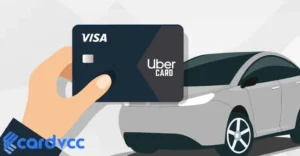Yes, virtual cards have a CVV. They function like physical cards, with a unique CVV for security purposes.

Virtual cards are digital alternatives to physical credit or debit cards. They offer enhanced security for online transactions. Users receive a unique card number, expiration date, and CVV. These details help protect against fraud and unauthorized transactions. Virtual cards are often used for one-time purchases or subscriptions.
They can be easily managed through mobile apps or online banking. This flexibility provides peace of mind to users. Virtual cards are widely accepted by online merchants. Many financial institutions now offer virtual cards to their customers. They are an effective tool for secure online shopping.
Introduction To Virtual Cards
Virtual cards are digital versions of physical credit or debit cards. They offer convenience and security for online transactions. Virtual cards have gained popularity due to their ease of use and enhanced protection against fraud.
What Are Virtual Cards?
Virtual cards are digital cards used for online purchases. They work like traditional cards but exist only online. Each virtual card has a unique number, expiration date, and CVV code.
Virtual cards are often linked to your physical bank account or credit card. They are designed to provide a secure way to shop online without exposing your main card details.
How Virtual Cards Work
Virtual cards generate a unique card number for each transaction or merchant. This reduces the risk of fraud and keeps your main card safe.
Here’s a simple breakdown of how virtual cards work:
- You request a virtual card from your bank or card issuer.
- The issuer generates a unique card number, expiration date, and CVV.
- You use the virtual card details for online shopping.
- The transaction is processed just like with a physical card.
Virtual cards can be used for subscriptions, single purchases, or recurring payments. They can be easily managed through your bank’s app or website.
Some key features of virtual cards include:
- Unique card numbers for each transaction.
- Enhanced security with unique CVV codes.
- Temporary or limited-use options.
Virtual cards provide an extra layer of security for online transactions. They help prevent unauthorized use of your main card details.
Security Features Of Virtual Cards
Virtual cards are gaining popularity due to their robust security features. They provide a safer alternative to traditional credit or debit cards. These features are designed to protect your financial information and reduce fraud. Let’s explore the key security features of virtual cards.
Encryption And Tokenization
Encryption ensures that your data is safe during online transactions. It converts your information into a code. This code is unreadable without a decryption key. Tokenization replaces sensitive information with unique tokens. These tokens are useless if intercepted by hackers.
Both encryption and tokenization work together. They protect your card details from unauthorized access. This makes virtual cards highly secure.
Fraud Protection
Virtual cards offer advanced fraud protection features. These features help detect and prevent fraudulent activities. Here are some key aspects:
- One-time use numbers: These numbers expire after a single transaction.
- Spending limits: You can set limits on your virtual card. This controls how much can be spent.
- Real-time alerts: Receive instant notifications of any suspicious activity.
- Temporary card numbers: Generate temporary numbers for specific transactions.
These features ensure that your virtual card remains secure at all times.
Cvv On Physical Vs. Virtual Cards
Understanding the CVV on Physical vs. Virtual Cards is essential for secure transactions. This section will explore the definition, differences, and usage of CVV in both card types.
Definition Of Cvv
The CVV, or Card Verification Value, is a three-digit number. This number is found on the back of physical cards. It adds an extra layer of security for online transactions.
For virtual cards, the CVV is digitally generated. It serves the same purpose as the physical card’s CVV, ensuring the card is in the right hands.
Differences In Cvv Usage
| Aspect | Physical Cards | Virtual Cards |
|---|---|---|
| Location | On the back of the card | Generated online |
| Accessibility | Always visible | Visible in the app |
| Security | Prone to theft | Highly secure |
Physical cards have the CVV printed on them. This makes them vulnerable to theft if the card is lost. Virtual cards generate the CVV digitally. This means it’s only accessible through your secure app.
Physical card CVV is static. They do not change unless the card is replaced. Virtual card CVVs can be dynamic. They can change for each transaction, enhancing security.
Generating Cvv For Virtual Cards
Virtual cards are a modern way to make payments online. These cards also need a CVV code. The CVV code helps to secure your transactions. Let’s explore how CVV codes are generated for virtual cards.
Automated Cvv Generation
Virtual cards often use automated systems to create CVV codes. These systems generate unique codes for each card. This process ensures the highest level of security. Automated CVV generation helps in preventing fraud.
- Unique codes for each card
- Highest level of security
- Prevents fraud
Temporary Cvv Codes
Some virtual cards use temporary CVV codes. These codes change after each transaction. This adds an extra layer of protection. Temporary CVV codes are especially useful for one-time purchases.
| Feature | Benefit |
|---|---|
| Temporary CVV | An extra layer of protection |
| One-time use | Ideal for single purchases |
Temporary CVV codes make virtual cards safer. They reduce the risk of unauthorized use. Always check if your virtual card offers temporary CVV codes.
Benefits Of Cvv On Virtual Cards
Virtual cards are a secure way to shop online. One key feature of these cards is the Card Verification Value (CVV). The CVV adds an extra layer of security. It helps prevent unauthorized use of your card.
Enhanced Security
The CVV on virtual cards boosts security. It ensures only the cardholder can use the card. This three-digit code is hard to steal. Even if someone gets your card number, they still need the CVV. This makes it tough for fraudsters to misuse your card.
Virtual cards often change their CVV with each transaction. This dynamic CVV feature makes them even more secure. It protects your card information from being reused.
Convenient Online Shopping
Virtual cards with a CVV make online shopping easy. You don’t need to carry a physical card. You can generate a virtual card quickly. This saves time and effort.
Some virtual cards let you set spending limits. You can control how much you spend online. This feature is helpful for budgeting.
Virtual cards also protect your main bank account. They act as a shield. If a virtual card gets compromised, your main account stays safe.
| Feature | Benefit |
|---|---|
| CVV | Prevents unauthorized use |
| Dynamic CVV | Changes with each transaction |
| Spending Limits | Helps with budgeting |
In summary, the CVV on virtual cards offers enhanced security and convenient online shopping. It ensures safe transactions and protects your finances.

Limitations And Challenges
Virtual cards offer many benefits, like convenience and security. But they also have limitations and challenges. This section explores these aspects in detail.
Technical Limitations
Virtual cards do have some technical limitations. Not all online merchants accept them. This can be frustrating for users. Some virtual cards may have issues with recurring payments. This is because they often have short lifespans.
Another issue is the CVV number. Not all virtual cards come with a CVV. This can make online purchases difficult. Some websites require a CVV for transactions.
Technical glitches can also occur. Sometimes, the virtual card may not work. This can happen due to system errors. These glitches are rare but can be annoying.
User Awareness
User awareness is also a challenge. Many people do not know how to use virtual cards. They may not understand the benefits and limitations.
Some users may forget to generate a new card. This can lead to expired cards. Users need to stay aware and proactive.
Another issue is security awareness. Users should know how to protect their virtual card information. They should use strong passwords and avoid sharing card details.
To help users, companies should provide clear instructions. Educational resources can make a big difference.
Use Cases For Virtual Cards
Virtual cards offer a range of benefits. They come with added security features, including CVVs. These digital payment methods are versatile and convenient. Below, we explore some common use cases for virtual cards.
Online Purchases
Virtual cards are perfect for online purchases. They provide an extra layer of security. Unlike physical cards, virtual cards are less vulnerable. They can be easily generated for one-time use.
- Protects against fraud
- Limits exposure of actual card details
- Can be used on multiple e-commerce platforms
Using a virtual card online is simple. Enter the card number, expiration date, and CVV. This helps keep your real card information safe.
Subscription Services
Virtual cards are ideal for subscription services. They make it easy to manage recurring payments. You can set limits or cancel the card anytime.
| Benefit | Description |
|---|---|
| Control | Set spending limits easily. |
| Security | Avoid sharing real card details. |
| Flexibility | Cancel or update the card easily. |
Virtual cards simplify the process. Enjoy peace of mind with your subscriptions. No need to worry about unauthorized charges.
Future Of Virtual Card Security
The future of virtual card security promises enhanced protection for users. This includes emerging technologies and industry trends. These advancements aim to make virtual cards more secure. Here’s a closer look at what’s on the horizon.
Emerging Technologies
Emerging technologies play a key role in virtual card security.
- Biometric Authentication: Fingerprint and facial recognition add another layer of security.
- AI and Machine Learning: These technologies detect fraudulent activities faster.
- Blockchain: This tech provides a tamper-proof way to store transaction data.
Industry Trends
Industry trends shape how virtual card security evolves.
| Trend | Description |
|---|---|
| Tokenization | Replace card details with unique tokens. |
| Real-Time Alerts | Notifies users of every transaction instantly. |
| Dynamic CVV | CVV codes that change periodically. |
These trends and technologies aim to make virtual cards safer.

Frequently Asked Questions Do virtual cards have a CVV?
What Is A Cvv On A Virtual Card?
A CVV is a security code on virtual cards. It ensures transactions are secure. The CVV is typically three or four digits.
Do Virtual Cards Have Cvv Codes?
Yes, virtual cards have CVV codes. These codes enhance security. They function similarly to CVVs on physical cards.
How Do I Find The Cvv On A Virtual Card?
You can find the CVV in your virtual card details. Access them through your banking app or website.
Is The Cvv On Virtual Cards Secure?
Yes, the CVV on virtual cards is secure. It helps prevent unauthorized transactions. Always keep it confidential.
Conclusion
Virtual cards do have CVV numbers, ensuring secure online transactions. These cards provide an extra layer of protection. They are convenient for online shopping and subscriptions. Using virtual cards can help prevent fraud. Always check with your provider for specific details.







